Mohammed Hassan recently presented at the WashU MRC Symposium. He presented his research on how dietary habits shape how our next generation will look like.
Mohamed Hassan presents at Science SLAM; wins travel award (Links to an external site)


Mohammed Hassan recently presented at the WashU MRC Symposium. He presented his research on how dietary habits shape how our next generation will look like.


Patients with diabetes have a high risk of developing skeletal diseases accompanied by diabetic peripheral neuropathy (DPN). In this study, we isolated the role of DPN in skeletal disease with global and conditional knockout models of sterile-α and TIR-motif-containing protein-1 (Sarm1). SARM1, an NADase highly expressed in the nervous system, regulates axon degeneration upon a […]
Accumulation of adipose tissue within and outside of skeletal muscle is associated with orthopedic injury and metabolic disease, where it is thought to impede muscle function. The close juxtaposition between this adipose and myofibers has led to hypotheses that paracrine interactions between the two regulate local physiology. Recent work suggests that intramuscular adipose tissue (IMAT) […]
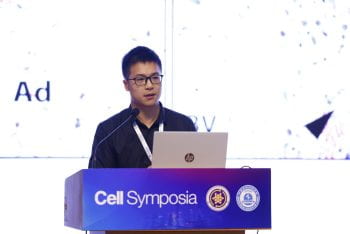
Xiao presented his work on the “Molecular mechanisms and integrative physiology of obesity” at the Cell Press Symposia
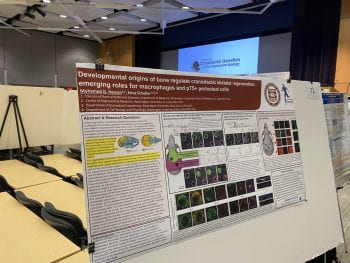
Mohammed Hassan presents his work on craniofacial regeneration at the recent meeting for the Society of Craniofacial Genetics & Developmental Biology #dentistscientistsrock

“With adequate optimization, GeoMx spatial transcriptomics is a robust tool for bone.” Samia presented her research on Spatial Transcriptomics at the ASBMR Conference in Vancouver. She talked about changes in bone in response to loading and the role of spatial transcriptomics in identifying important genes and pathways.

Congratulations to Dr. Erica Scheller on her promotion to Associate Professor. Her contributions and dedication have earned her this well-deserved recognition. Congratulations, Dr. Scheller!

Xiao Zhang, a PhD student in the Scheller lab attended the Biomedical Engineering retreat in Minnesota. This regional career conference helps strengthen and diversify the next generation of researchers, giving them the opportunity to network with leaders in the field. It also provides a great opportunity to learn from faculty and peers about academic careers […]

Xiao Zhang and Lila Dabill had a great time meeting some of their favorite science celebs at #ENDO2023. Thankful that such esteemed members of the community are there to encourage the next generation!

The Scheller Lab members presented their posters at the Musculoskeletal Research Symposium while Dr. Scheller presented her postdoc Dr. Muhammad Hassan’s research. The annual MRC symposium always challenges us to grow by putting our work out there. Congratulations to our experienced pros and first time presenters, and especially Xiao Zhang for taking home one of […]
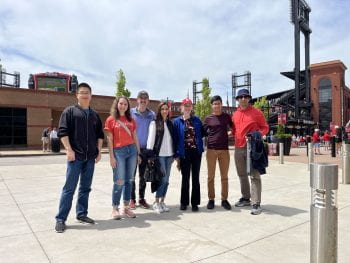
This past Thursday, the Scheller Lab went to the Cardinals Game for a day out. The members enjoyed lunch at Salt and Smoke before heading to the game. They also celebrated Anurag’s last day in the lab as he departs for medical school.
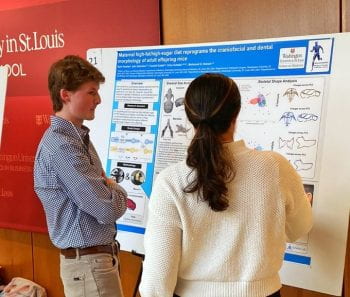
Kyle Koester, an undergraduate at the Scheller Lab, under mentorship of Dr. Muhammad Hassan, successfully presented his poster at the WUSTL undergraduate symposium. His poster talked about the effects of maternal and grandmaternal diet on offspring craniofacial morphology.
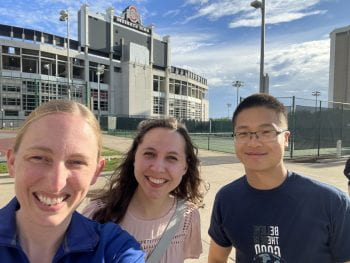
We recently attended the TRINS Neurometabolism Symposium at Ohio State University. Graduate researchers of the Scheller Lab, Lila Dabill and Xiao Zhang presented their posters at the symposium. We enjoyed meeting with other labs and discussing our shared interest of neurometabolism.
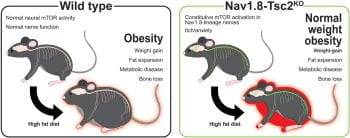
Obesity and nutrient oversupply increase mammalian target of rapamycin (mTOR) signaling in multiple cell types and organs, contributing to the onset of insulin resistance and complications of metabolic disease. However, it remains unclear when and where mTOR activation mediates these effects, limiting options for therapeutic intervention. The objective of this study was to isolate the role of constitutive […]